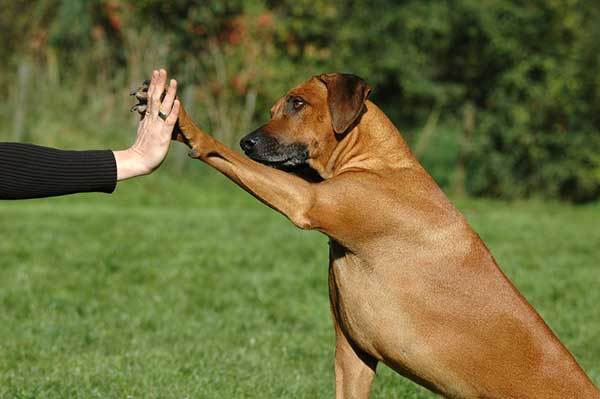You’ve seen it happen way too many times to be surprised.
You’re strolling calmly on a walk with your dog when suddenly, you notice him tug his collar, slow down his speed and attempt to hide between your legs.
It happens every time and you just can’t seem to understand whether your furry friend just doesn’t like new people or whether deep down he just might be a little scared.
Does your dog lack confidence? Is he overly submissive and anxious around other dogs?
Below is a list of common symptoms of shyness and insecurity in dogs that may point to a lack of confidence in your dog.
Table of Contents
Common Symptoms of Shyness and Insecurity in Dogs
1. Cowering and shyly back footing in the presence of strangers.
2. Submissive urination – this occurs when a shy or insecure dog pees on seeing other dogs or humans as a sign of subordination.
To dogs, urine and the odor that comes with it signals one’s ranking in the hierarchy of things. Submissive urination is thus your dogs way of telling you or another dog that it is under you or their authority and means you no harm.
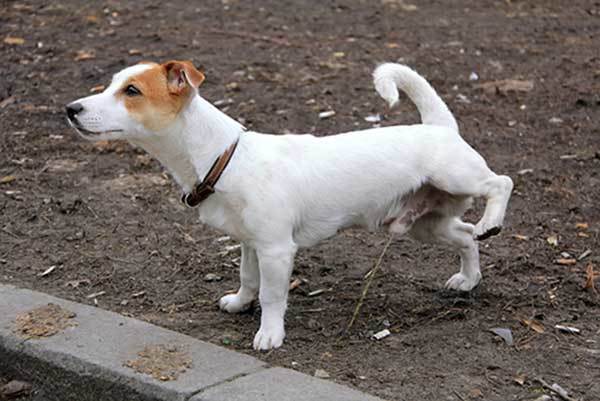
It is also a fearful way of pleading that you or the other dog not use any power you hold over him to hurt him. Humans do this too, in the face of seemingly terrifying situations, so the next time your canine buddy does the same go easy on him, remember in a different set of circumstances you could do it too.
3. Tucked tail firmly held between his legs in a manner that hinders movement.
4. Rapidly moving eyes.
5. Avoiding eye contact – a clear sign of inferiority in the animal kingdom and even amongst human beings.
6. Crouching of the head lower than the rest of the body while staring at the ground.
7. Refusal to go outside
8. Overly aggressive behaviors – like fear biting in the face of seemingly non-threatening situations as a last resort final push to get one to go away.
9. Lying on his back to expose his belly as a sign of vulnerability – a common mistake at the sight of this is to misinterpret this display as a request for a belly rub. Please don’t do this as the same may quickly result in being bitten.
So now that that’s out of the way….
How then can you build confidence in your dog?
In order to answer this question, you must first try to understand why your furry friend is suffering from low self-confidence.
Dogs, just like as human experience a unique range of emotions and are extremely sensitive to certain kinds of treatment and conditioning as they grow and develop.
Three things are more often than not the real root cause of your furry friend’s low self- confidence. Poor socialization, physical and emotional abuse and neglect.
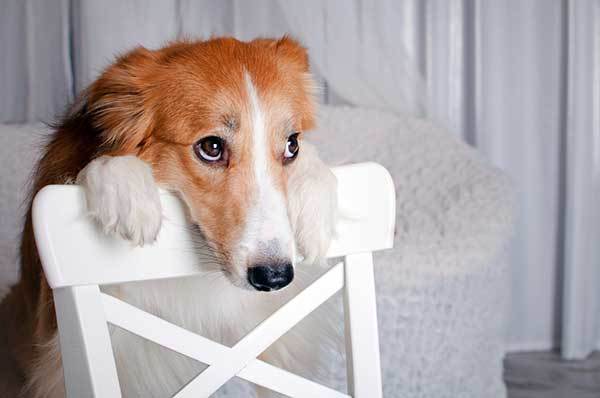
Physical and emotional abuse manifests itself in various forms including but not limited to physically hitting a dog, restraining the movement of a dog with a tight or uncomfortable rope or leash and yelling at or rejecting a dog’s need for love, affection and attention.
? Physical and emotional abuse leave a permanent imprint on your dog’s physical and emotional well-being and contribute greatly to his confidence or lack of it altogether.
Neglect is also a serious form of abuse that is displayed by a lack of proper feeding, grooming and care for your furry friend coupled with poor socialization which is socially isolating your dog from other dogs and people through a lack of exposure to other people, places and things and your dog is sure to exhibit some of the signs of lack of confidence stated above.
1. Learn to Read Your Dog’s Body Language.
Your Dog just like anybody else will react differently in certain situations compared to others.
Learning to spot the signs of fear and anxiety that indicate that your dog finds a particular situation, scenario, person(s) or experience stressful and or uncomfortable will go a long way in helping you anticipate these situations ahead of time and help your furry friend cope with them in a more confident manner as we shall discuss below.
2. Turn your Dog’s Focus away from the object of their fear and onto something more Positive.
In the words of Tony Robbins what you fear you focus on; and what you focus on you attract.
Ever been in a heightened state of fear or anxiety? It’s almost as if in that moment nothing else but getting away from that pain or object of fear matters. You get obsessed, extremely anxious and unable to handle or do anything else.

? Get your dog to shift his focus from a particularly scary or stressful situation through targeting, a dog training technique designed to take your dog’s eyes and brain off of a scary thing or object and onto a certain part of your body such as your palm which he has been trained to associate with feelings of happiness and excitement.
The trick here is that it is almost virtually impossible to experience the feelings of fear and anxiety while at the same time exercising joy and happiness.
How To Teach your Dog Targeting
If they ever were a simple way to verbally explain targeting to your canine buddy and it would be “tap the button (target spot), get a treat.”
Dogs love to explore the world around them through their exquisite sense of scent. Nose targeting pulls your dog’s attention and eye contact from a scary and worrisome situation to a more pleasant one.
To teach your dog targeting, hold out your hand in front of your dog at the level of or below his nose, when he sniffs it say a word or make a verbal sound and feed him a treat. Pull your hand away and do it again, each time he sniffs, make a sound and offer him a treat until he begins to associate him bonking his nose into your palm with a treat.
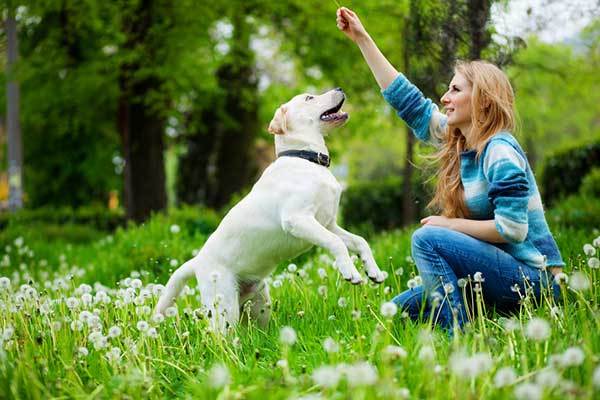
You can add a playful dimension to it by offering your hand in different places and positions so he is forced to move to reach it either by jumping or climbing onto something to touch it.
With time reduce your rate of reinforcement only offering him a treat on the second or third attempt so as to make the game more fun and unpredictable.
Try the same game then when you sense your furry friend a little anxious about something, like that disheveled stranger making uneasy glances at your dog on a walk through the park to take his eyes and brain away from the object and situation while reinforcing positive feelings of happiness and excitement that come with nose targeting.
3. Facilitate the chance for your Dog to spend time with other Dogs.
There’s no better way to learn to be a dog than to just be one. At their core dogs are very caring, socially adept and confident animals.
If you sense your furry friend exhibiting characteristics that fall short of this standard allowing him the time and space to spend time with other dogs will help recalibrate his idea of how a dog should behave in certain situations.
Spending time with other dogs will allow him to not only see and admire the behavior of other more confident dogs around him but also put in him the desire to emulate these so called alphas of the pack and thereby boost his confidence.
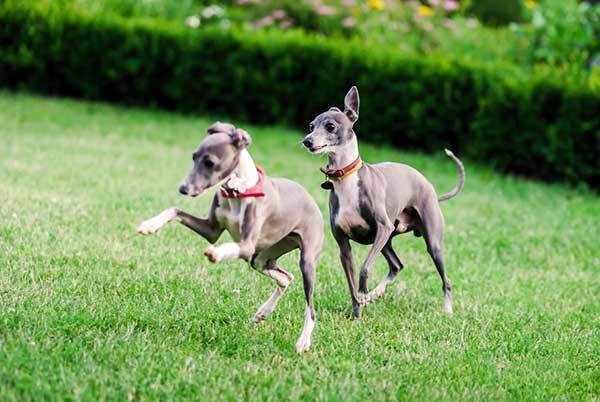
4. Obedience Training.
Dog obedience training creates structure and discipline in your dog’s life and routine.
Obedience training is concerned with teaching him basic good manners and training him to respond swiftly to your cues and commands.
Use basic obedience commands like “sit”, “stay” and “down” to help take your dog’s mind off scary situations and put his focus back onto you.
At its core obedience training allows you an opportunity to create a language with your canine buddy that you can then use to teach him successfully confident dog behaviors that boost his self-confidence.
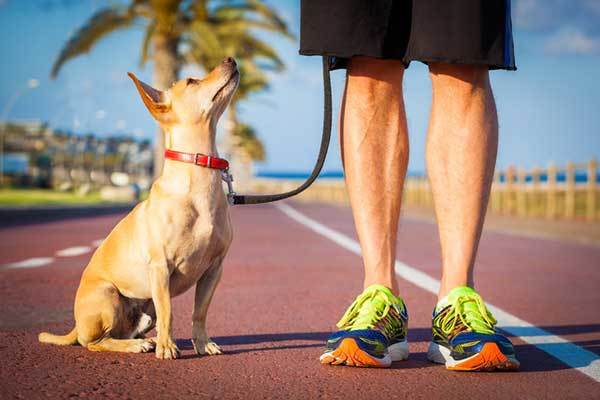
Obedience training affords you also the chance to create a language through body language and commands that helps you gain direct control over your dog’s behavior especially in situations that he may find worrisome or feel particularly fearful and anxious of.
This is almost like a channel for you to communicate with your furry friend when he is feeling fearful and anxious. It also allows you to build and establish trust with your dog by gaining his confidence which is key in helping you direct your dog easily even in the face of a particularly anxious or fearful situation.
5. Reward Confident Behavior.
Like you your furry friend will repeatedly do what works for him. A common scenario among dogs is to view their owners as the leader of their pack. The somewhat ultimate alpha under whom they must submit themselves.
In response to this, some insecure and fearful dogs may more often than not, lie on their backs and urinate upon the return home of their owners as a sign of resignation and surrender to authority.

Your reaction in the face of such a situation is extremely crucial to your dogs repetition of the same behavior. Positive reinforcement of such submissive behavior is likely to further reinforce your dog’s feelings of inferiority and submissiveness and leave you constantly dealing with a mess inside your home.
In order to combat such behavior you must learn to ignore such behavior while slowly training your dog to exhibit more confident behaviors such as taking a leak outside the house and rewarding the same.
6. Treat and Retreat.
Another exercise which one may also practice is to reward your dog’s bravery with treats for example by offering treats to persons whom your dog is seemingly afraid of and anxious around in order to get them to lure him to approach them.
In this exercise place your dog at a safe distance from a person who makes him worried or anxious, the person will then toss a low value treat above your dog’s head which your dog will instinctively turn and walk back to get.
After retrieving the treat, your dog will again turn to look at the person who will again then toss a high value treat to your dog, this time however right in front of the dog.
Once your dog has come forward and gobbled the high value treat he will again have a lower valued treat tossed above his head behind him forcing him to move back to get it.
After a couple times rinsing and repeating the same your dog will begin to instinctively associate the action of moving forward towards the person with the feeling of being positively rewarded and will thus be more motivated to move confidently towards the person rather than cower fearfully while back footing from them.
In the process, your dog will begin to associate his confident behavior and response with the happiness and joy that comes with receiving a treat and will be more likely to repeat such confident behavior.
ALSO READ: The Top 20 Best Puzzle Toys For Your Bored Dog
A Final Note
At the end of it all, like you and me, your furry friend will also experience a wide range of emotions from time to time. Some days he’ll be strong and brave and some days scared, anxious and afraid.
The key however is to love and care for your furry friend in his moments of fear, worry and anxiety while working tirelessly to build the confidence in your dog that will have him leaping for joy in your presence, the presence of other people and in the presence of other dogs like the true hero he is.
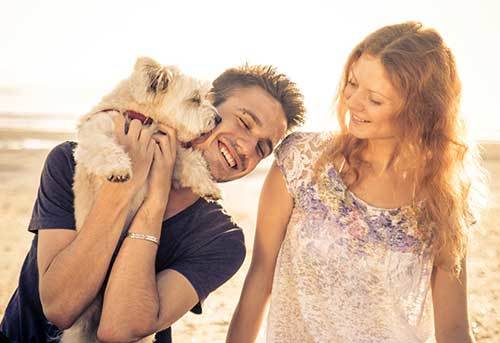
The myth that being warm to your furry friend in the face of his fear, worry and or anxiety reinforces his lack of confidence however should indeed be left as just that, a myth.
Think about it for a second time, imagine a time when you were really scared, anxious or afraid would you have rather your best friend hug you and be there for you or ignore you and watch as you went through the full range of emotions you were experiencing? I bet that hug didn’t sound so bad right?
Be kind to your furry friend even as you endeavour to teach him to be more confident like you and me, it is through love that he will indeed conquer all.

